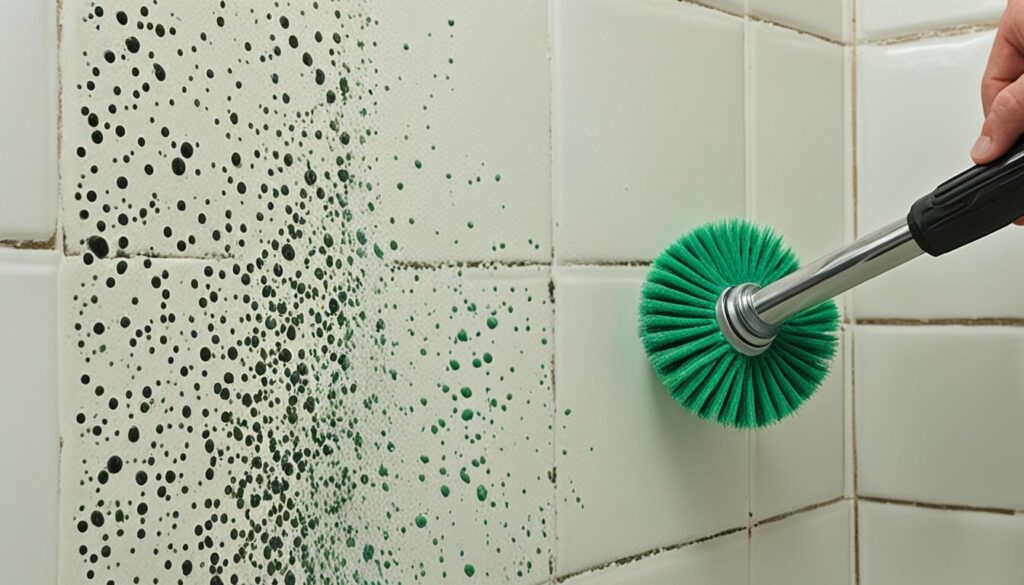
The Complete Guide to how to clean shower grout Mold
Welcome to our comprehensive guide on how to effectively clean shower grout mold. Maintaining a clean and healthy shower space is crucial for your well-being and the longevity of your bathroom. Mold growth in shower grout not only looks unsightly but can also pose potential health risks. In this article, we will provide you with step-by-step instructions and tips to help you remove mold from your shower grout and prevent its recurrence.
Shower grout mold is a common problem due to the warm, moist environment of the bathroom. It can develop over time if not properly addressed and lead to discoloration, odors, and deterioration of the grout. Furthermore, mold can trigger respiratory issues and allergies, making it essential to tackle this issue promptly.
Before we delve into the step-by-step guide, it’s crucial to understand the importance of cleaning shower grout mold. By keeping your shower grout mold-free, you not only enhance the aesthetic appeal of your bathroom but also safeguard the health of you and your loved ones.
Key Takeaways:
- Shower grout mold can be unsightly and pose potential health risks.
- Mold growth in the bathroom can trigger respiratory issues and allergies.
- Regular cleaning and prevention strategies are essential for maintaining a mold-free shower grout.
- In the following sections, we will provide a step-by-step guide on how to effectively clean shower grout mold.
- We will cover various methods and techniques, including homemade remedies and commercial cleaners.
Understanding the Importance of Cleaning Shower Grout Mold
When it comes to maintaining a clean and welcoming bathroom, paying attention to the shower grout is crucial. Over time, mold can develop in the grout lines, not only affecting the appearance but also posing potential health risks. Therefore, understanding the importance of cleaning shower grout mold is essential for both the aesthetics and the well-being of your bathroom.
Mold Prevention:
One of the primary reasons to keep your shower grout mold-free is to prevent its growth in the first place. Mold thrives in damp and humid environments, making your bathroom an ideal breeding ground. By regularly cleaning and maintaining your shower grout, you can prevent mold spores from taking hold and spreading.
Health Risks of Mold:
Exposure to mold can have detrimental effects on your health, especially for individuals with respiratory issues or weakened immune systems. Breathing in mold spores can lead to allergies, asthma attacks, sinusitis, and other respiratory infections. By cleaning shower grout mold, you can minimize the health risks associated with mold growth.
“Mold in the bathroom can contribute to a variety of health problems, from allergies to respiratory issues. Taking the time to clean shower grout mold can significantly improve the indoor air quality and overall well-being of your home.” – Dr. Emily Johnson, Allergist and Immunologist.
Regular cleaning and maintenance of shower grout not only help in preventing mold but also contribute to a fresh and hygienic bathroom environment. By investing a little time and effort, you can ensure that your shower space remains free from unsightly and potentially harmful mold growth.

To further emphasize the importance of cleaning shower grout mold, let’s take a look at the potential health risks associated with prolonged exposure to mold in the bathroom:
- Respiratory issues: Mold spores can trigger allergies, asthma attacks, and other respiratory problems, affecting the overall lung health of individuals.
- Infections: Mold can cause sinus infections and respiratory infections, particularly in individuals with weakened immune systems.
- Allergies: People with mold allergies may experience symptoms such as sneezing, coughing, itching, and watery eyes when exposed to mold spores.
- Fungal skin infections: Prolonged exposure to mold can sometimes lead to skin infections, causing irritation, rashes, and itchiness.
By prioritizing the regular cleaning and maintenance of your shower grout, you reduce the likelihood of mold growth and minimize these potential health risks.
Now that you understand the importance of cleaning shower grout mold and the risks associated with its presence, it’s time to delve into the step-by-step guide on how to effectively clean and prevent mold in your shower.
Step-by-Step Guide: How to Clean Shower Grout Mold
When it comes to maintaining a clean and hygienic bathroom, proper care of shower grout is essential. Over time, mold can accumulate in the grout lines, not only causing an unsightly appearance but also posing potential health risks. In this step-by-step guide, we will walk you through effective methods to remove shower grout mold and restore the pristine condition of your bathroom.
Materials You Will Need:
- Protective gloves and eyewear
- White vinegar
- Baking soda
- Hydrogen peroxide
- Lemon juice
- Dish soap
- Toothbrush or grout brush
- Mold-resistant grout sealer
- Clean cloth or sponge
Step 1: Prepare the Cleaning Solution
In a small bowl, mix equal parts white vinegar and water to create a natural cleaning solution. Alternatively, you can combine baking soda and water to form a paste. Both options are effective in combating mold.
Step 2: Apply the Cleaning Solution
Dip a toothbrush or grout brush into the cleaning solution and apply it to the moldy grout. Scrub gently in circular motions to ensure thorough coverage. For stubborn mold stains, you can add a few drops of hydrogen peroxide or lemon juice to the solution for added effectiveness.
Step 3: Let the Solution Sit
Allow the cleaning solution to sit on the moldy grout for approximately 10-15 minutes. This will help loosen the mold and make it easier to remove.
Step 4: Scrub and Rinse
Using your toothbrush or grout brush, scrub the moldy grout lines again to dislodge the loosened mold. Rinse the area with clean water to remove any residual cleaning solution.
Step 5: Prevent Future Mold Growth
To prevent mold from returning, it’s crucial to seal the grout lines with a mold-resistant grout sealer. Apply the sealer according to the manufacturer’s instructions and allow it to dry completely.
Step 6: Regular Maintenance
To keep your shower grout mold-free, establish a regular cleaning routine. Use a mild dish soap and warm water to clean the grout on a weekly basis. Additionally, ensure proper ventilation in your bathroom to minimize moisture, as mold thrives in damp environments.
By following this step-by-step guide and implementing effective cleaning methods, you can successfully remove mold from your shower grout and maintain a clean, healthy bathroom environment.

Conclusion
Keeping your shower grout clean and free from mold is essential for maintaining a healthy and hygienic bathroom environment. By following the step-by-step guide discussed in this article, you can effectively remove mold and prevent its recurrence.
Regular cleaning is crucial in preventing mold growth. Make sure to clean your shower grout regularly using a mildew-resistant cleaner. Scrubbing the grout lines with a toothbrush or a grout brush can help remove any stubborn mold stains.
Additionally, proper ventilation is key to preventing mold. Ensure your bathroom is well-ventilated by using an exhaust fan or opening windows to allow air circulation. This will help reduce moisture levels and discourage mold growth.
Lastly, consider sealing your shower grout to provide an extra layer of protection against mold. Grout sealer helps deter moisture absorption, reducing the likelihood of mold formation. Applying a sealer once or twice a year can significantly extend the lifespan of your shower grout.




